
/filters:background_color(white)/2024-07/Support%20%2B%20Testing%20Services%20Cover%20Image%20and%20LinkedIn.png)
Choosing the Right SOM Provider: Compliance and Longevity with Support+
Stay Ahead in the SOM Race - Discover how Support+ navigates regulatory challenges and ensure your SOM's long-term longevity and success.
Ezurio's system-on-module solutions are built on the latest processors and wireless, and utilizing our long-term software support to give developers a secure, smart, connected IoT platform.
Published on October 14, 2024

In the ever-evolving landscape of embedded systems, the need for more compact, flexible, and powerful computing solutions has never been more critical. The technological advancements of the 21st century have brought in an era where efficiency and adaptability are critical, particularly in product design and development.
Among these developments, one solution stands out for its pivotal role in shaping the future of embedded computing: the System-on-Module (SOM). This article dives into the core of SOMs, exploring its components, functionality, benefits, applications, and the criteria for selecting the right SOM for your project.
A system-on-module (SOM) is a small board-level circuit that integrates the key elements of a computing system into one module. It typically includes a microprocessor or SoC, volatile memory (RAM), non-volatile storage (flash), power management circuitry, and often additional interfaces or co-processors – all on a compact printed circuit board. The SoM plugs into a carrier board (via board-to-board connectors or an edge connector), which provides standard connectors (USB, Ethernet, HDMI, serial, etc.) and any specialized peripherals needed for the final product. In other words, the SoM contains the “brains” of the system, while the carrier board is the custom “body” that interfaces with the outside world.
It’s important to note that a SoM is distinct from a system-on-chip (SoC). An SoC is a single silicon chip integrating CPU, memory, and peripherals on one die, whereas a SoM may include an SoC on the module along with other components. The SoM itself is a complete board-based module, not just a chip, and therefore has the physical space to include additional features like high-speed memory, clock oscillators, wireless radios, etc., that wouldn’t all fit on a single chip. In summary: the SoC is the integrated chip (like a Snapdragon or i.MX processor), while the SoM is a ready-to-use module containing that chip plus supporting circuitry. This distinction means SoMs offer a more plug-and-play solution – you handle it like a small board, not a delicate BGA chip.
Key components typically included in a SOM are:
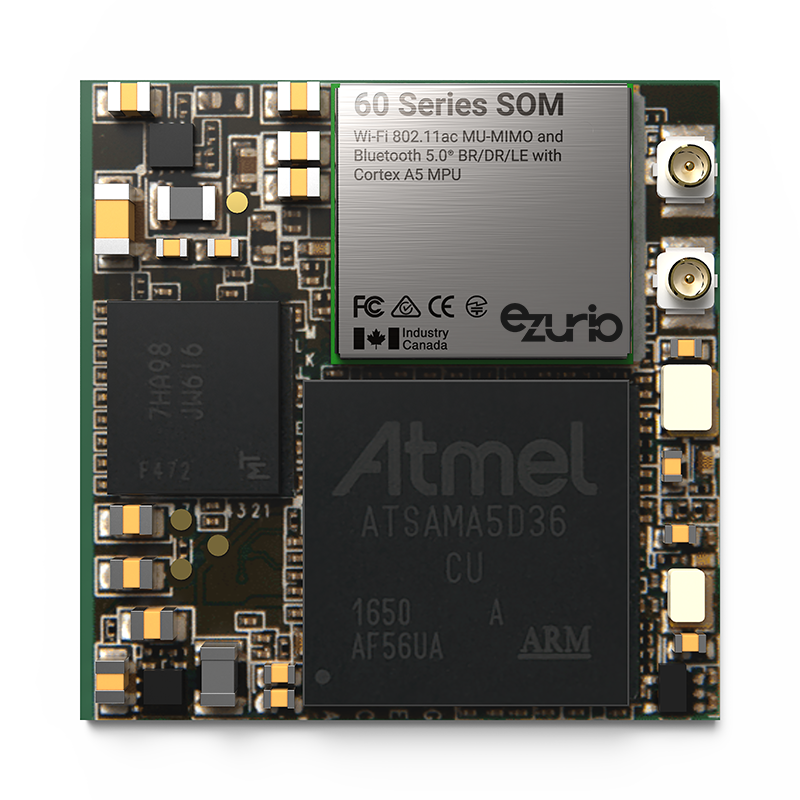
The architecture of a SOM is designed for seamless integration with a carrier board, which provides the necessary connectors and interfaces for peripheral devices. This modularity allows for a high degree of flexibility and scalability in system design.
The communication between the SOM and other hardware components is facilitated through these connectors, allowing the SOM to interact with and control various peripherals and devices within the larger system.
SOMs are designed to mechanically attach to a carrier board via high-density connectors. These connectors carry a multitude of signals between the SOM and the carrier board, including power supply lines, communication interfaces, and control signals.
The carrier board typically provides the physical interfaces for these signals, such as RJ45 jacks for Ethernet or USB ports, and connects to other custom hardware required for the application.
This configuration results in developing a flexible Single Board Computer (SBC) platform. These SBC platforms can be customized to meet the specific requirements of your project, with selections made from a range of processors, memory, wireless, and I/O options that best match the performance and functionality needs of your product. At Ezurio, we specialize in helping build your custom SBC solution needs.
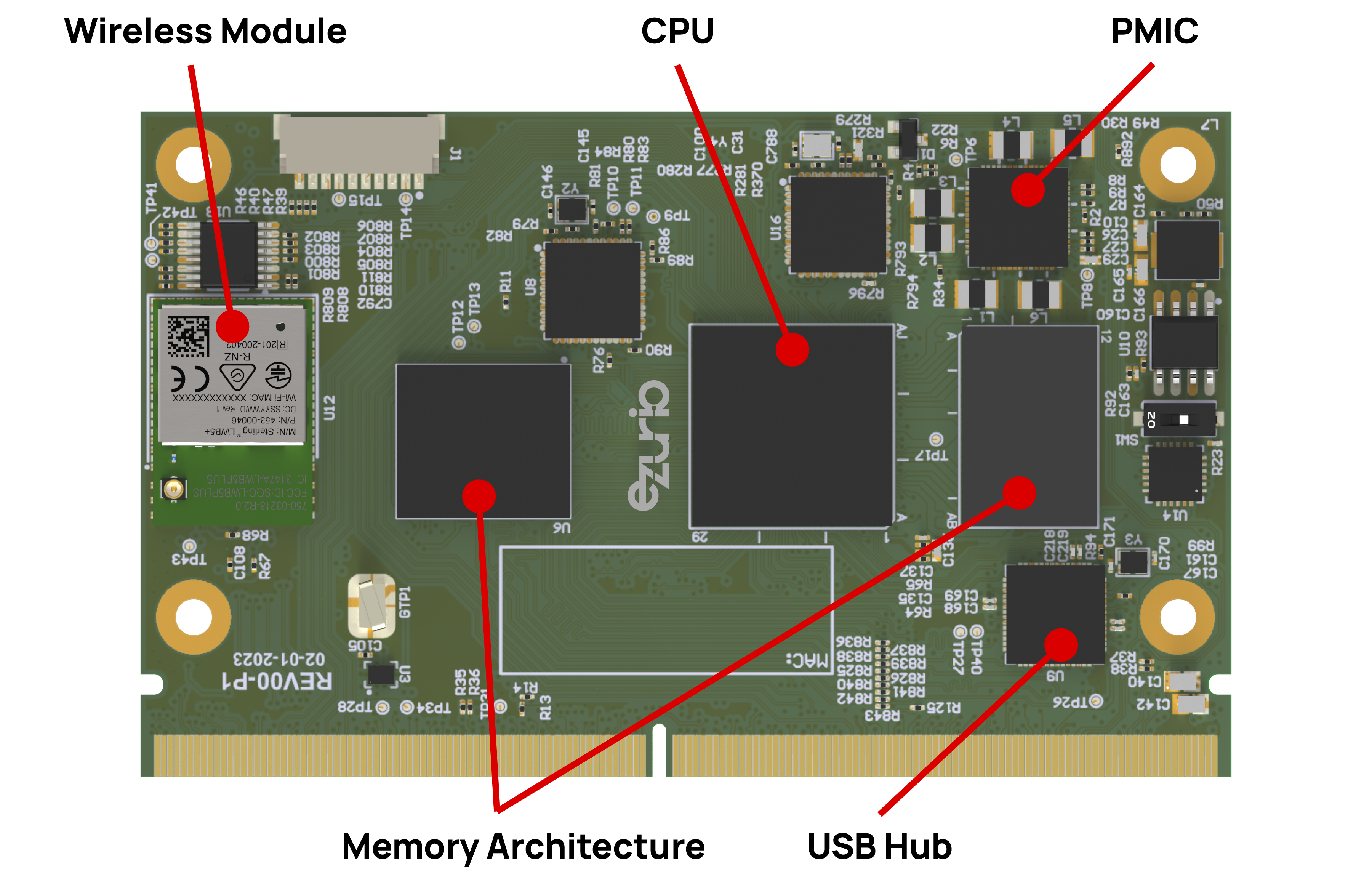
The SOM's pinout is meticulously designed to maximize functionality and flexibility. Design engineers must carefully map these pins to the appropriate functions on the carrier board, considering the requirements for impedance matching, signal integrity, and routing constraints, especially for high-speed signals.
SOMs come equipped with a variety of communication interfaces to interact with external devices. These include:
For more direct control or interaction with external hardware, SOMs offer GPIO pins that can be configured either as input or output.
These pins play a crucial role in interfacing with sensors, actuators, and other digital components, enabling a wide range of application-specific functionalities.

Upon power-up, the SOM executes code from a bootloader stored in non-volatile memory, which initializes the hardware components on the module and loads the operating system (OS) into RAM.
The choice of OS can vary, including options like Yocto Linux, Buildroot Linux, Android, Ubuntu, Zephyr RTOS and FreeRTOS. Real-time operating systems (RTOS), such as Zephyr RTOS and FreeRTOS are used in applications where timing is critical, while more comprehensive systems like Linux are suited for complex applications that require advanced functionalities.
For a SOM to effectively communicate with peripherals and execute application-specific tasks, appropriate drivers and middleware are required.
These software components abstract the hardware complexity and provide APIs (Application Programming Interfaces) for application development, streamlining the process of software creation and integration.
With the foundation provided by the OS, drivers, and middleware, developers can focus on writing the application software that runs on the SOM, tailored to the specific needs of their product. This software can leverage the full capabilities of the SOM, from processing power to connectivity options, to perform its intended functions.
Related Reading: Is Your Wireless SOM Certified? What Ezurio (formerly Boundary Devices) and Ezurio Bring to the Table

The Nitrogen6X SOM V2 is a highly integrated System-on-Module (SOM) based on the NXP i.MX 6 family of applications processors. The processor, RAM (1-4GB), and eMMC (4-64) can be modified to fit your requirements.
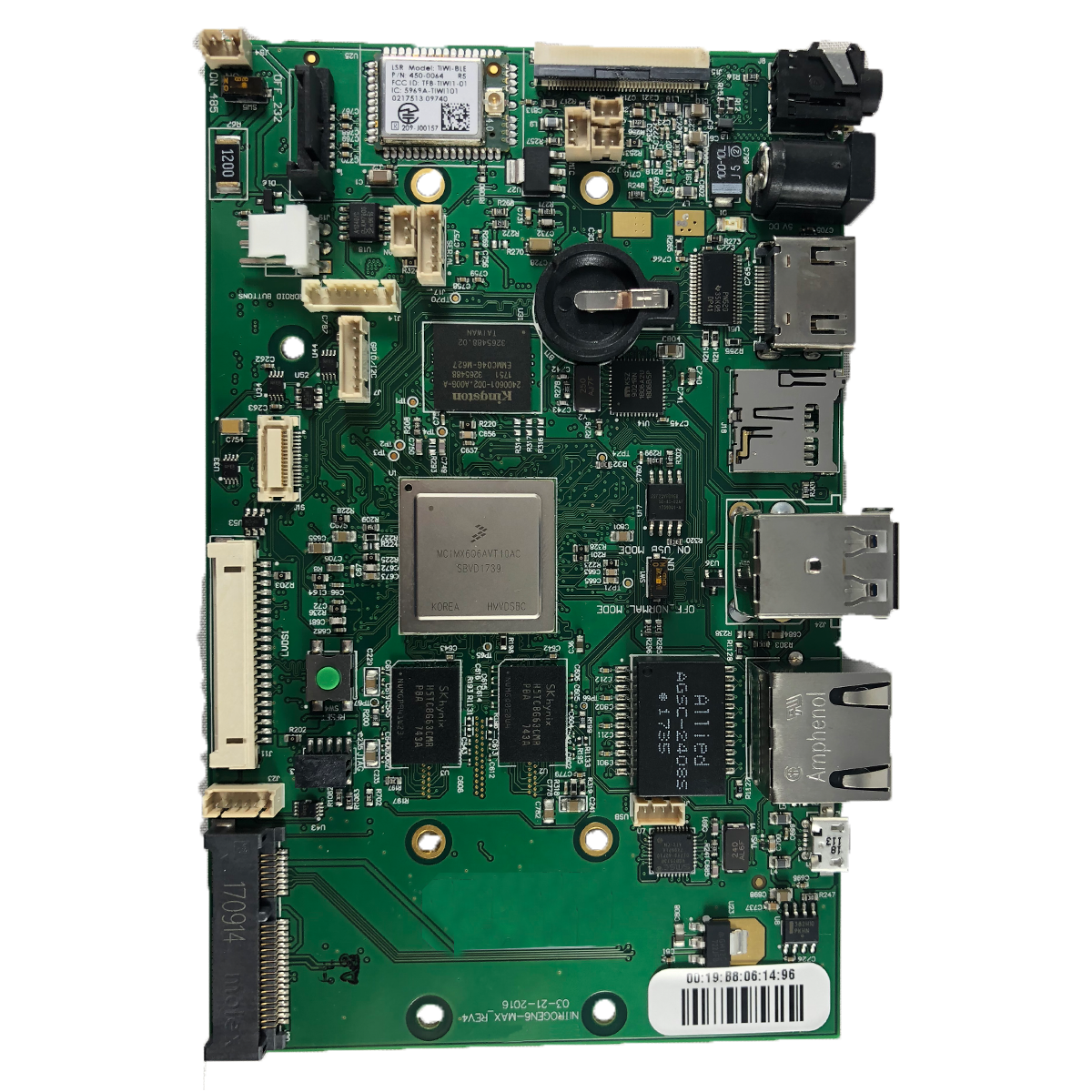
This system-on-module (SOM) series, based on NXP Semiconductor’s i.MX 8, is ideal for advanced graphics, imaging, machine learning, machine vision, audio, voice, and video applications.
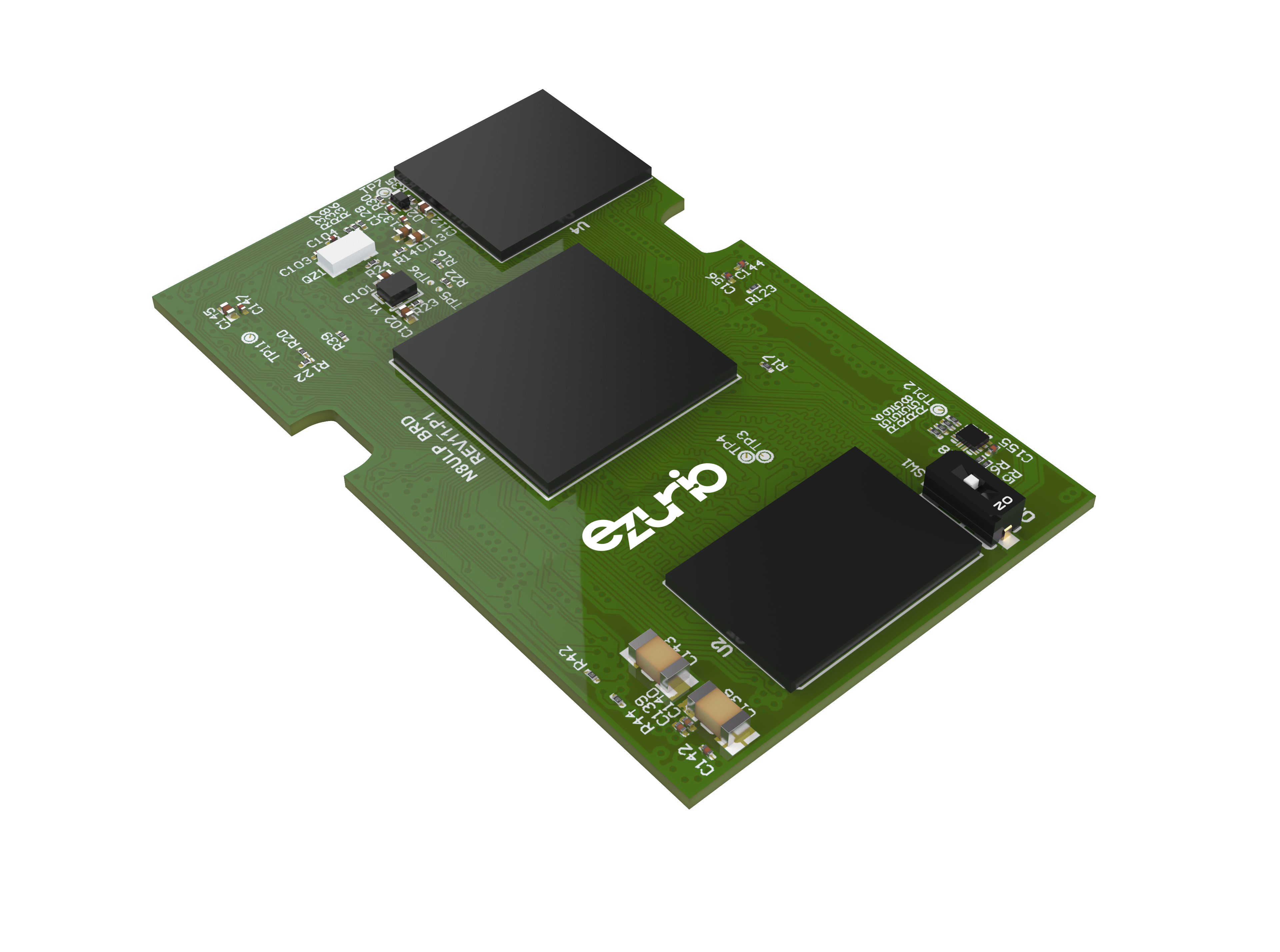
It delivers powerful MPU/MCU, endless interfaces, 4-core virtualization, 10+ year lifecycle, smart power management, and Secure Enclave/Secure Boot.


Are you struggling to keep up with the complexities of integrating SOMs into your smart factory? As smart factories evolve, the need for seamless connectivity, real-time processing, and strict regulatory compliance becomes increasingly critical.
Ezurio's Support+ provides direct access to our expert engineers, who will guide you through every step - from selecting the right SOM to optimizing RF performance to ensure your design meets industry standards. Whether you're facing connectivity issues, design integration challenges, or regulatory compliance hurdles, our engineers work closely with your team to get your product running smoothly.

The utilization of System-on-Modules (SOMs) in embedded applications presents a multitude of strategic advantages, particularly for design engineers and product development teams aiming to accelerate development cycles and enhance product performance. Here are the key benefits of incorporating SOMs into embedded system designs:
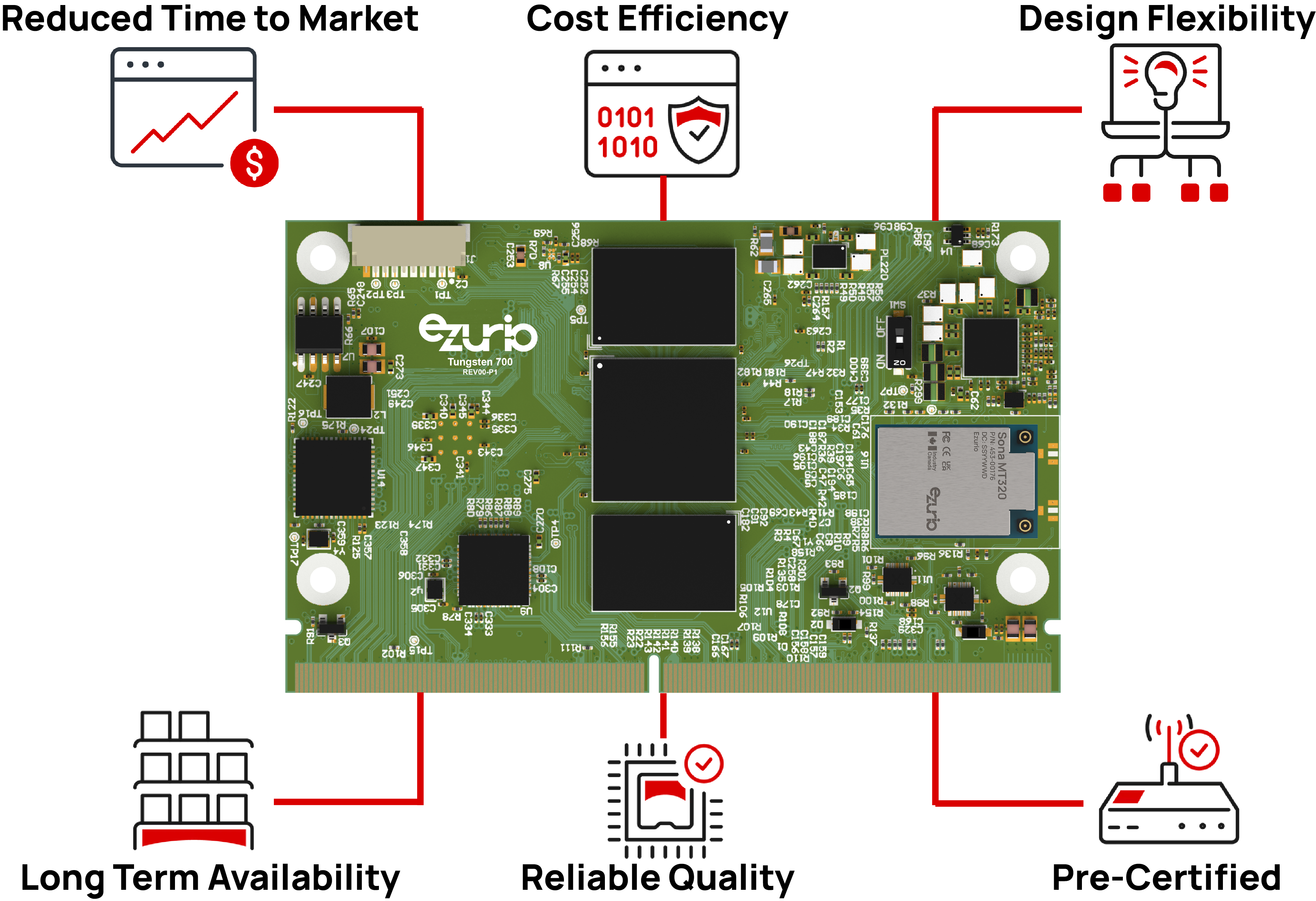
SoM modules dramatically reduce development time by providing a pre-built computing core. Engineers can skip the arduous stages of CPU, memory, and wireless circuit design and jump straight to integrating application-specific features. Bypassing custom CPU board design and using a pre-tested module means fewer hardware iterations and faster prototyping. It’s not uncommon to save many months of development – one study noted a 9–12 month timeline reduction for IoT products by leveraging SoMs or SBCs over full custom designs. This accelerated development cycle is crucial in fast-moving markets. Products can be deployed sooner, and companies can respond quicker to technology changes or customer needs. Furthermore, since the SoM is already proven, teams spend less time troubleshooting low-level hardware bugs and more time on software and features.
At first glance, buying a SoM might seem more expensive than just buying the raw components (CPU, RAM, etc.). However, when you factor in engineering labor, PCB fabrication, assembly yield, and the cost of multiple prototype spins, SoMs often provide overall cost savingsgraperain.com. Development costs are lowered because you aren’t designing a six or eight-layer HDI PCB with tiny BGA components – the SoM vendor has done that in volume, amortizing the cost. SoM manufacturers also achieve economies of scale by producing modules in quantity, driving down the per-unit cost compared to what a small-to-mid size company could do on its own. For the end user of the SoM (you), there is no need to meet high minimum order quantities of expensive components; you can leverage the SoM vendor’s supply chain. Additionally, SoMs help avoid expensive mistakes – a faulty spin of a complex custom board can waste thousands in PCB and assembly costs, whereas a carrier board for a SoM is simpler and cheaper to get right. In production, if your volumes increase significantly, you always have the option later to migrate to a full custom design once the product is proven – but the SoM de-risks the initial design and reduces upfront NRE costs.
SoM modules offer exceptional flexibility in product design. Because the SoM is a self-contained module, it can often be swapped or upgraded with minimal changes to the carrier board (especially if it adheres to a standard). This means you can design a single baseboard and populate it with different SoM variants to create a product family or to upgrade performance in the future. For example, you might offer an entry-level and a high-end version of a device by using two pin-compatible SoMs (perhaps one with a single-core CPU and one with a quad-core CPU) on the same carrier – reducing development effort for multiple models. SOMs like our NXP i.mx8, NXP i.mx9, and MediaTek Genio SMARCs facilitate this by defining consistent pin layouts so that various SoMs (even from different vendors) can plug into the same socket. Upgrading to a next-generation processor can be as simple as dropping in a new SoM module, rather than redesigning the whole board. This capability is great for long-term maintainability: your product line can evolve with technology without a complete redesign. Ezurio, for instance, guarantees that our SMARC-compliant SoMs will support designs for 10+ years, and upgrading to a more powerful processor down the road is straightforward by swapping modules. In addition, SoMs make it easier to spin out derivative products – you can reuse the same SoM across multiple projects, each with a different carrier tailored to its function (one for, say, an IoT sensor gateway, another for a human-machine interface device, etc.). This modular reuse streamlines development across projects.
Perhaps one of the less tangible but critical benefits: using a SoM allows your engineering team to concentrate on what differentiates your product. Instead of spending months on low-level hardware design, your resources can be directed to software development, user experience, and application-specific features – the things that add value for your customers. The SOM handles the generic computing platform, so you don’t become a “computer manufacturer”, you remain a product developer. This benefit is often emphasized by companies adopting SOMs: it frees them from re-inventing the wheel on the hardware side. Moreover, SOM vendors like Ezurio often provide extensive support (reference designs, FAE support, design reviews) which further offloads the burden from your team. With the core hardware off your plate, you can accelerate parallel development (hardware and software at the same time) and iterate faster on the features that matter. In a competitive market, this focus can be the difference between a product that’s merely functional and one that is polished and innovative.
System-on-modules are designed, manufactured, and tested to meet stringent industry standards. This ensures high reliability and performance right from the start, reducing the risk of hardware failures in the field.
SOM manufacturers like Ezurio provide long-term support for our products, including documentation, development tools, and software updates. This commitment supports the lifecycle of the end product, even as individual components may become obsolete.
Based on NXP Semiconductor’s i.MX 6, 8, and 9 for advanced graphics, imaging, machine learning, machine vision, audio, voice, and video applications.
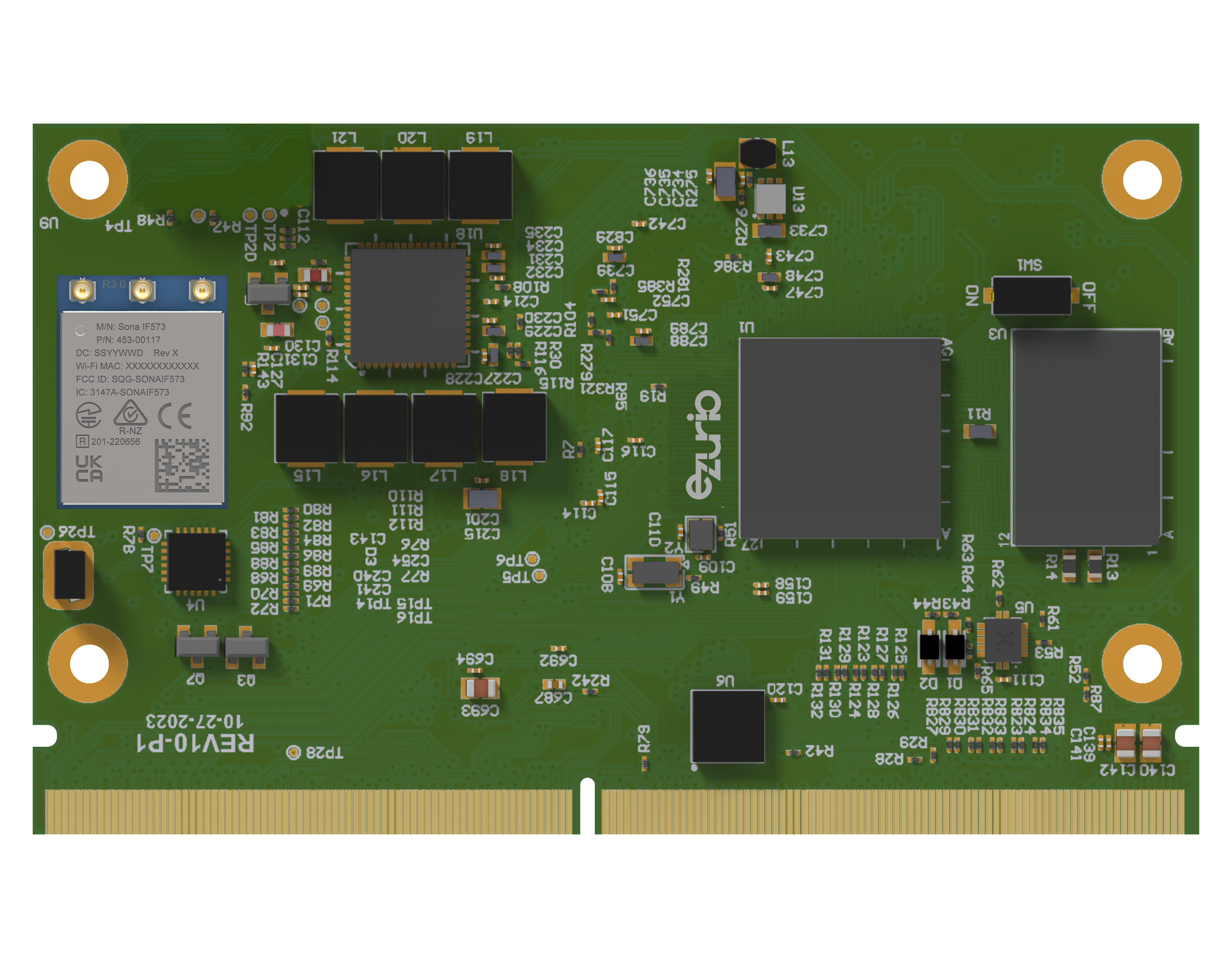
Based on MediaTek Genio, is ideal for high-performance, edge-AI IoT platforms with edge processing, advanced multimedia, wide range of sensors and multi-tasking OS.

Open Standard Module (OSM) SOMs with multi-core MPU and MCU processing, camera and video support, AI accelerators, and a wide array of interface.

SOM technology finds applications across a diverse range of industries, from commercial and healthcare to IoT and industrial automation. In the industrial sector, for example, SOMs are instrumental for improving precision in robotic controls systems and increasing efficiency in assembly line automation.
The healthcare industry utilizes SOMs in patient monitoring devices and diagnostic equipment, leveraging their compact size and computational power. Similarly, in commercial IoT applications, SOMs enable smart building processes and the seamless integration of various IoT devices.
To learn more about specific applications and use cases of System-on-Modules, visit our case studies.
In the Internet of Things (IoT) era, many devices require built-in connectivity (Wi-Fi, Bluetooth Low Energy, Zigbee, LTE/5G, etc.) and need to be deployed rapidly. SoM modules excel here by providing pre-integrated wireless options and certifications. SOMs are ideal for “smart” IoT devices as they offer a versatile, scalable solution that simplifies the integration of connectivity, computing, and security features in interconnected environments. For example, an IoT gateway might use a SoM with Wi-Fi and BLE radios on-board, allowing it to collect sensor data and upload to the cloud without an external router. Because the wireless design is pre-done, developers can focus on the IoT application logic. Modules from vendors like Ezurio even include fully certified Bluetooth and Wi-Fi stacks, saving months of regulatory testing.
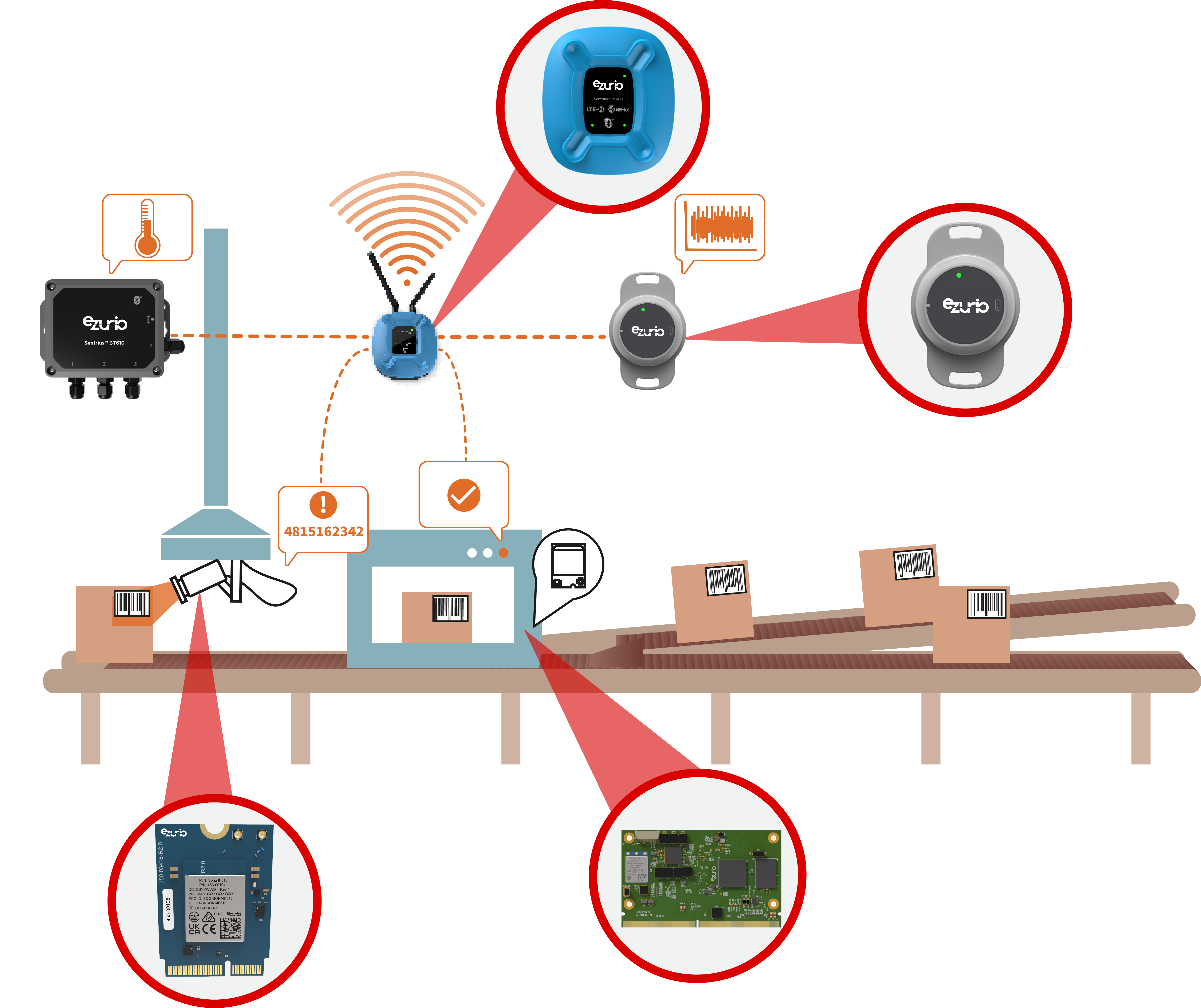
System on modules play a critical role in internet of medical things technology by providing a versatile and compact computing platform that enables the development of advanced medical devices with high performance and reliability. These modules integrate key components such as processors, memory, and connectivity, allowing medical device manufacturers to focus on creating specialized functionality for diagnostics, monitoring, and treatment. In medical equipment like imaging systems, patient monitoring devices, and portable diagnostic tools, SoMs offer the processing power necessary to handle real-time data analysis, imaging, and communication between devices and healthcare systems. Their modularity also facilitates rapid development and future upgrades, making them ideal for medical environments where precision, scalability, and compliance with stringent regulatory standards are essential.

System on modules are increasingly used in warehouse asset tracking systems to enable efficient and real-time monitoring of inventory and equipment. These compact and powerful modules integrate essential processing capabilities, wireless connectivity, and sensor interfaces into a single platform, simplifying the design and deployment of tracking solutions. In warehouse environments, SoMs are embedded in devices such as RFID readers, GPS trackers, and IoT-enabled sensors that collect and transmit data on the location, condition, and movement of assets. Their ability to process data locally and communicate seamlessly with centralized systems ensures accurate, up-to-date tracking and enhances inventory management, reducing errors and improving operational efficiency. Additionally, their scalability allows for easy integration into larger warehouse management systems as business needs grow.
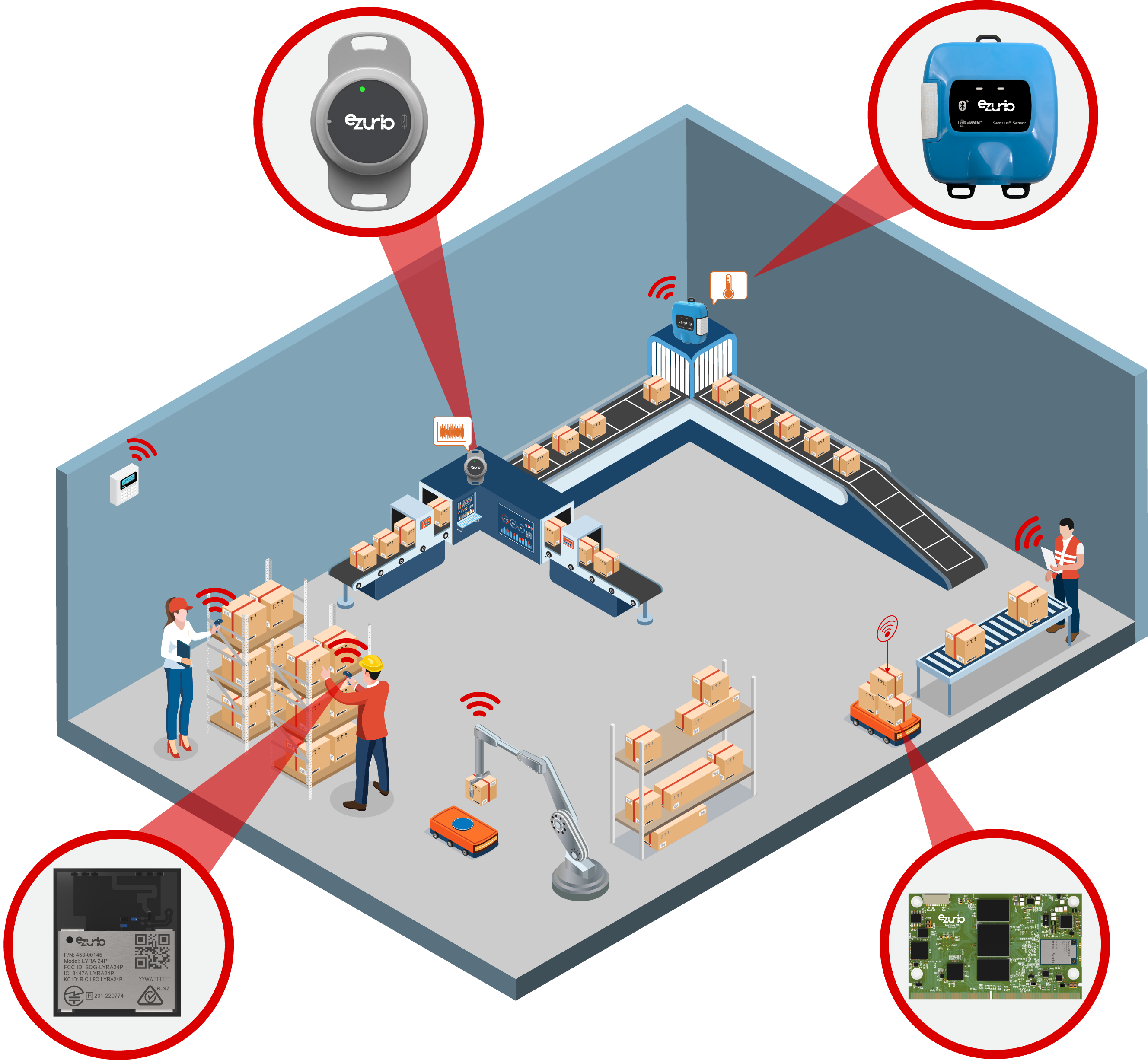
System on modules are crucial in defense applications due to their ability to provide high-performance computing in a compact, rugged form factor suited for harsh environments. In defense systems, SoMs are integrated into mission-critical equipment such as unmanned aerial vehicles (UAVs), radar systems, communication devices, and real-time surveillance platforms, where reliability and real-time processing are essential. These modules allow for advanced data processing, sensor fusion, and secure communication in the field, enabling rapid decision-making and enhancing operational capabilities. SoMs also offer the flexibility to be customized for specific defense needs, whether it's for image processing, secure data transmission, or controlling autonomous systems, making them an integral component in modern defense technology. Their robust design ensures they can withstand extreme conditions, such as temperature fluctuations and shock, while delivering consistent performance in mission-critical scenarios.
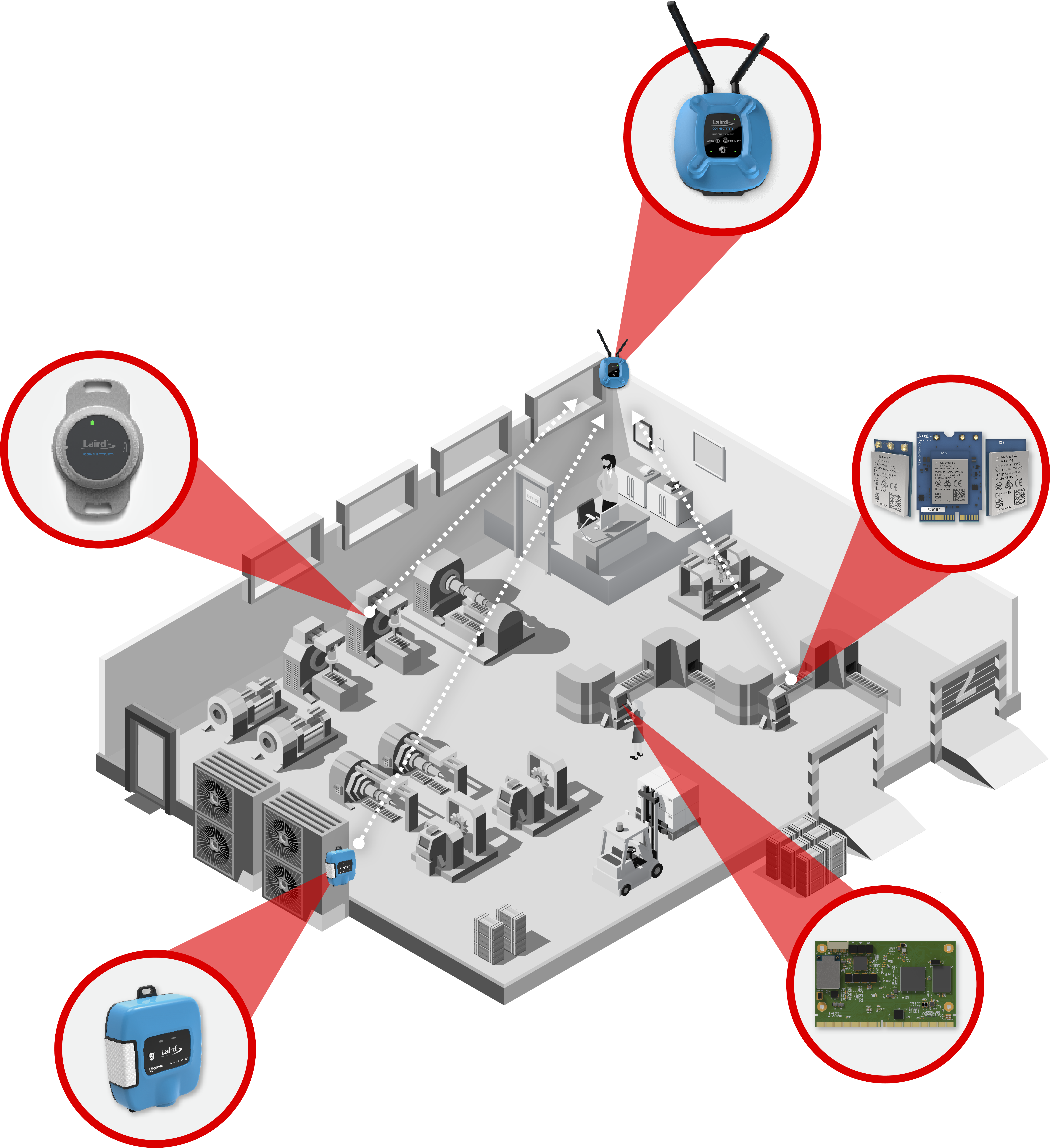
Ezurio is honored to be approved as an NXP Gold Partner! We look forward to working with the NXP team to deliver the solutions our customers need in an ever changing wireless future. Please follow the link for more information.

Selecting the appropriate SOM for your project involves considering several key factors, including processing power, connectivity options, and compatibility with existing systems. It's also essential to evaluate the support and ecosystem provided by the SOM manufacturer.
Leading SOM manufacturers distinguish themselves through their commitment to quality and support, and by providing comprehensive development resources. When evaluating potential SOMs, consider not only the product’s technical specifications but also the documentation, customer support, and availability of development kits and tools. These elements are crucial to ensure that your development process is as efficient and problem-free as possible.
Assess the longevity of product support. Choosing a SOM from a manufacturer that offers long-term support guarantees that you will receive updates and assistance throughout the lifecycle of your product, which is especially important for applications requiring extended operational periods.
Lastly, explore the ecosystem surrounding the SOM. A robust range of product offerings and compatible peripherals can greatly help the development process, offering ready-made solutions and expertise that can help overcome technical challenges.
By considering these aspects, you can ensure that the SOM you choose not only fits the technical requirements of your project, but also has the support and resources necessary for successful implementation and future scalability.
Related Reading: A Guide for Choosing The Right SOM or SBC For IoT Design
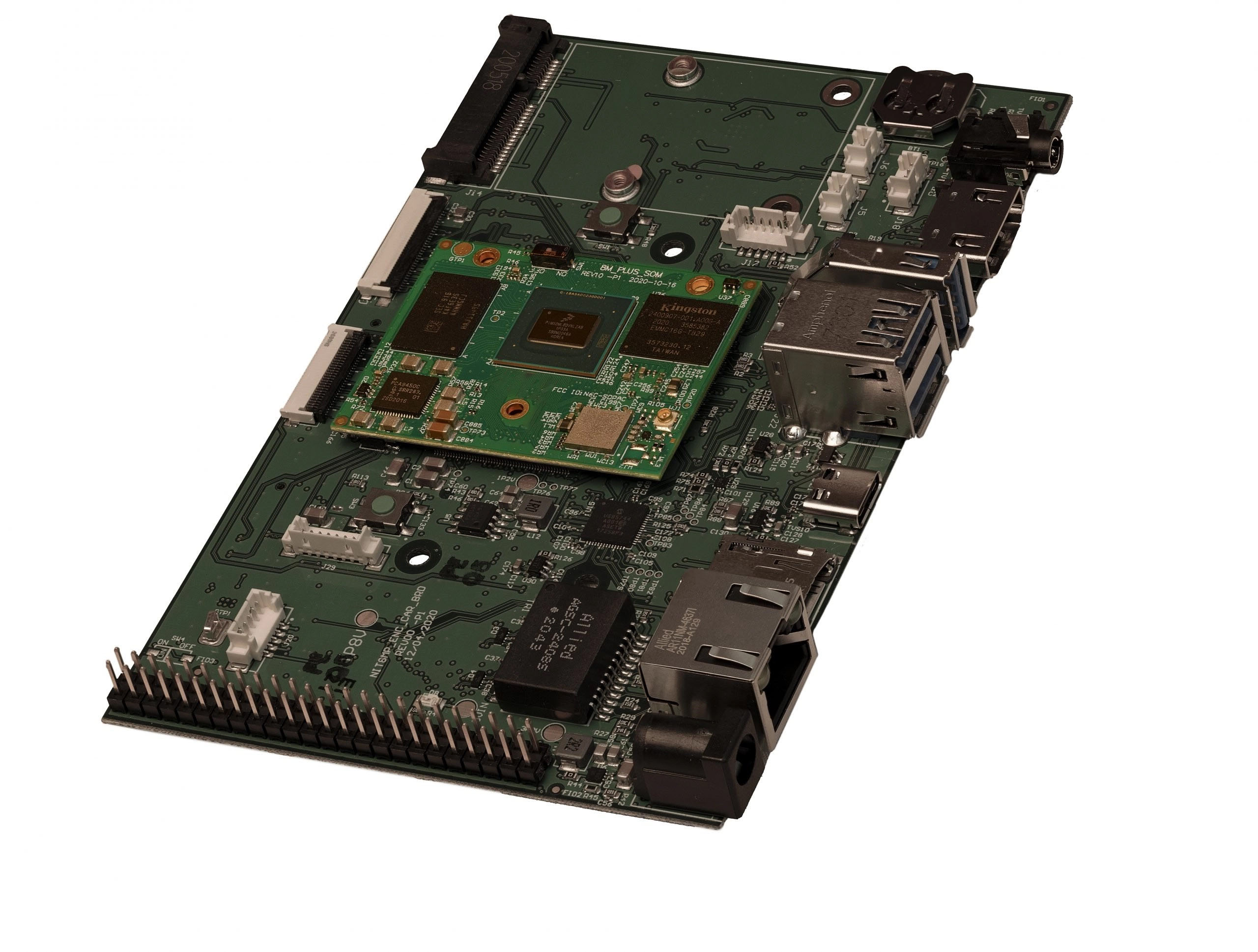
Emerging trends in SOM technology are shaping the future of embedded systems. Advances in processing capabilities, miniaturization, and the integration of AI functionalities are at the forefront of these developments.
These trends indicate a move towards even more powerful, versatile, and intelligent SOMs, capable of driving innovation in various industries. As these technologies evolve, we can expect SOMs to become even more integral to the development of cutting-edge products and solutions.
Ezurio works with numerous leading silicon partners to provide next-generation embedded systems.
System on Module (SoM) and Computer on Module (CoM) are essentially the same thing and the terms are often used interchangeably. Both refer to a small board-level circuit that integrates core computing functionality into a single module.
System on Modules come in three primary form factors: edge connector, mezzanine connector, and solder-down, each with distinct characteristics suited for different applications. Edge connector SOMs are widely used but have a larger footprint due to connector constraints, while mezzanine connector SOMs offer more efficient space utilization. Solder-down SOMs stand out for their mechanical robustness, low profile, and suitability for automated assembly processes, making them an attractive option for certain specialized applications.
The choice between a System on Module (SoM) and a System on Chip (SoC) for embedded applications depends on various factors, but generally, SoMs offer several advantages that make them a better choice for many embedded applications. SoMs provide greater flexibility as developers can use multiple SoMs with different SoCs on the same baseboard, allowing for easier testing of applications on various architectures. This modularity also enables easier upgrades and interchangeability of components. SoMs significantly reduce time-to-market and development costs compared to designing a complete system from scratch or working directly with SoCs. They simplify the design process by providing a pre-integrated computing platform.
SoMs are more user-friendly, especially for developers who may not have extensive hardware expertise. They offer a plug-and-play solution that doesn't require detailed knowledge of chip-level intricacies like pin configurations and thermal properties. While SoCs have advantages in terms of smaller footprint and potentially lower power consumption, SoMs strike a balance between integration and flexibility that is often more suitable for a wide range of embedded applications, particularly when considering factors like development speed, cost-effectiveness, and ease of implementation.
Ezurio turns design possibility into reality with a comprehensive range of RF modules, system-on-modules, single board computers, internal antennas, IoT devices, and custom solutions. With decades of engineering expertise, Ezurio provides solutions that reduce development costs and time to market. Our global reach and unmatched support are backed by a resilient global supply chain that gives our customers the stability to overcome every design challenge with confidence. Turn design possibility into reality with Ezurio, your connectivity expert.
To learn more about Ezurio, visit www.ezurio.com.

/filters:background_color(white)/2024-07/Support%20%2B%20Testing%20Services%20Cover%20Image%20and%20LinkedIn.png)
Stay Ahead in the SOM Race - Discover how Support+ navigates regulatory challenges and ensure your SOM's long-term longevity and success.
/filters:background_color(white)/2025-05/SOMs.png)
Ezurio offers a solution that is greater than the sum of its parts.
/filters:background_color(white)/2024-04/SOMs%20vs%20SoCs%20cover%20image.png)
Choosing between SOMs or SoCs is an important choice for your project. Explore the benefits of each and how they can be leveraged to meet your specific design requirements.